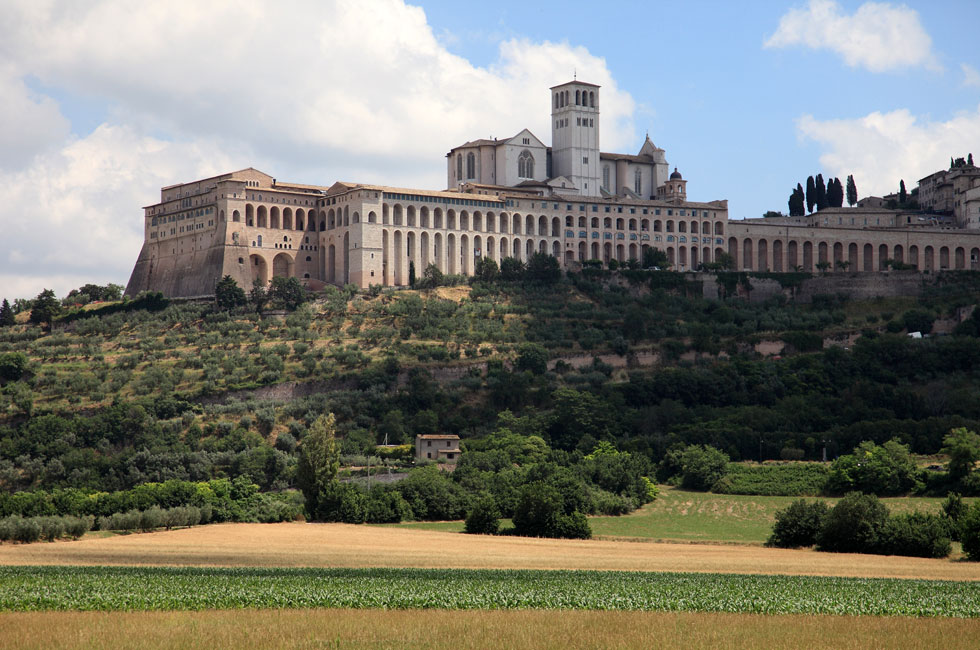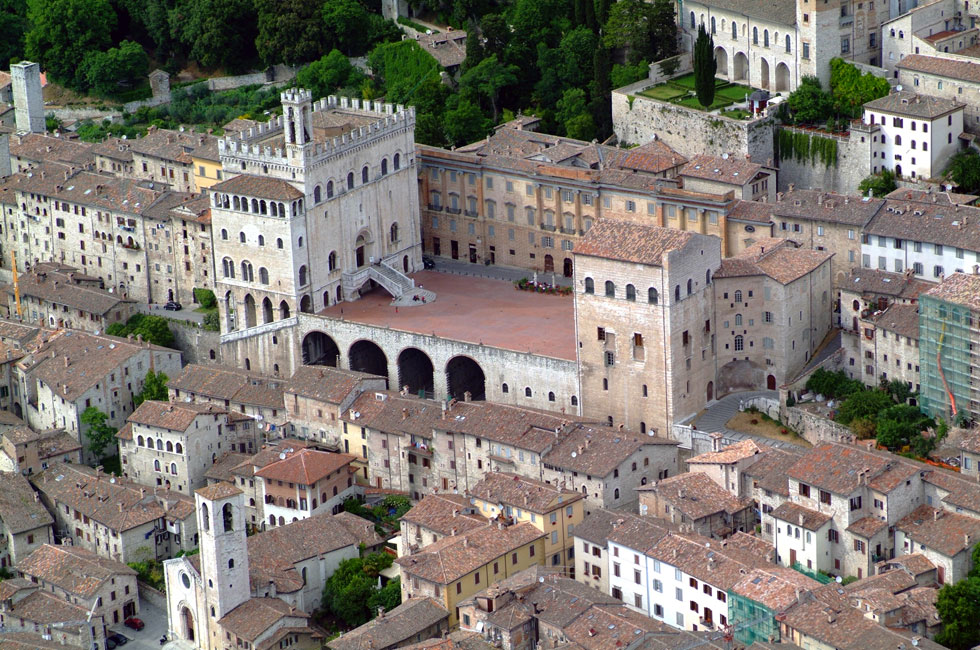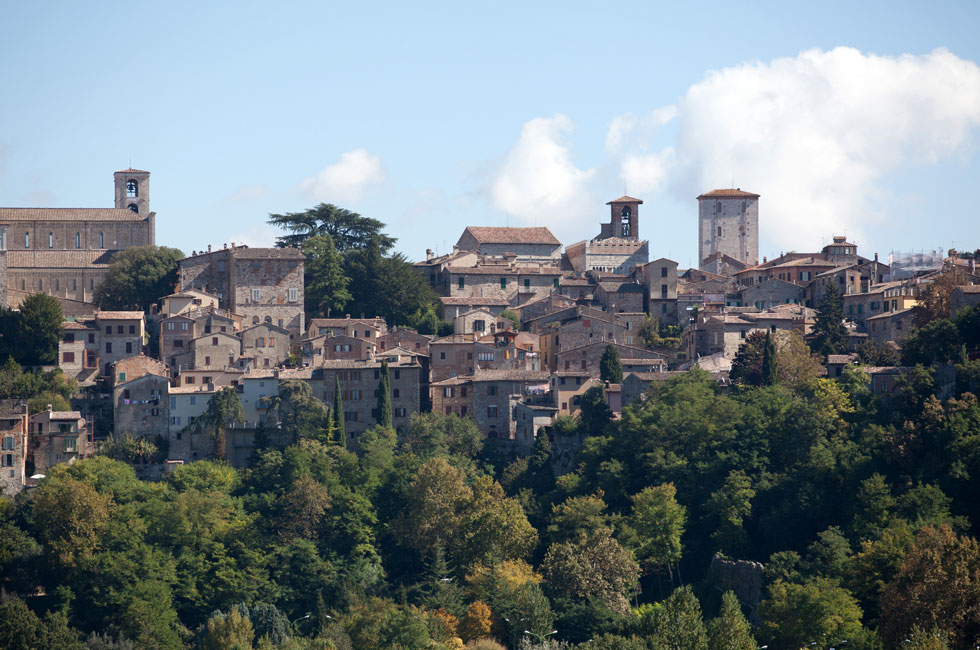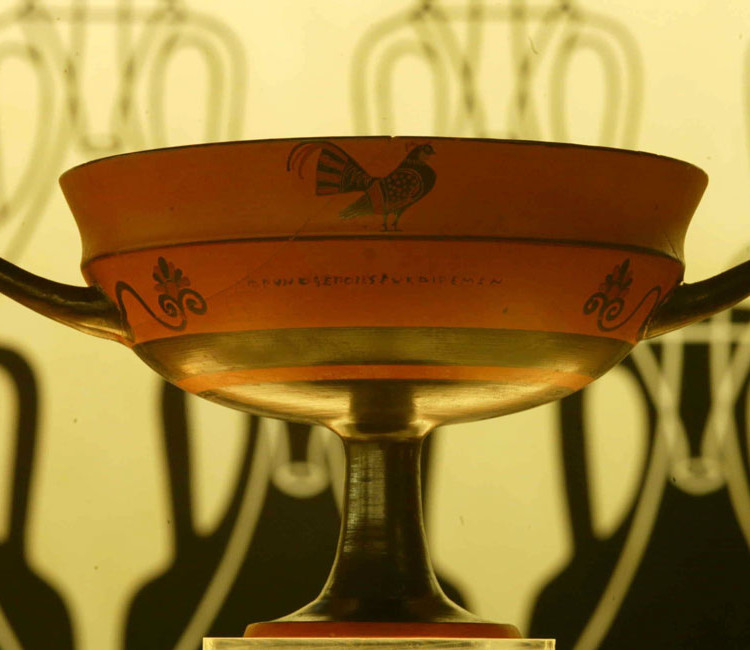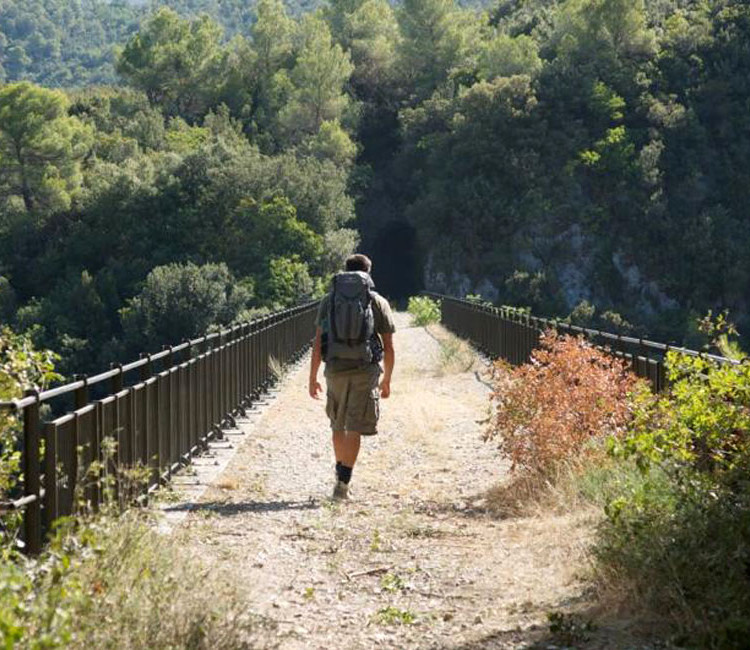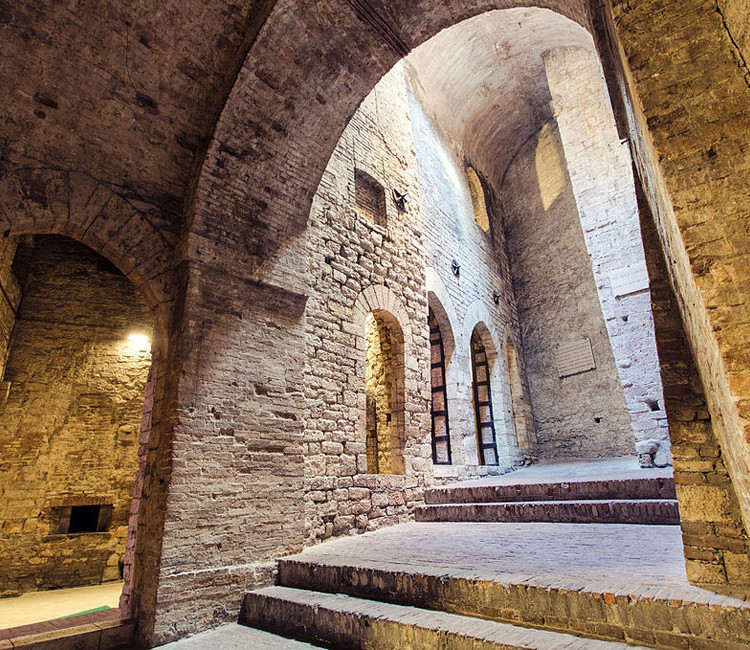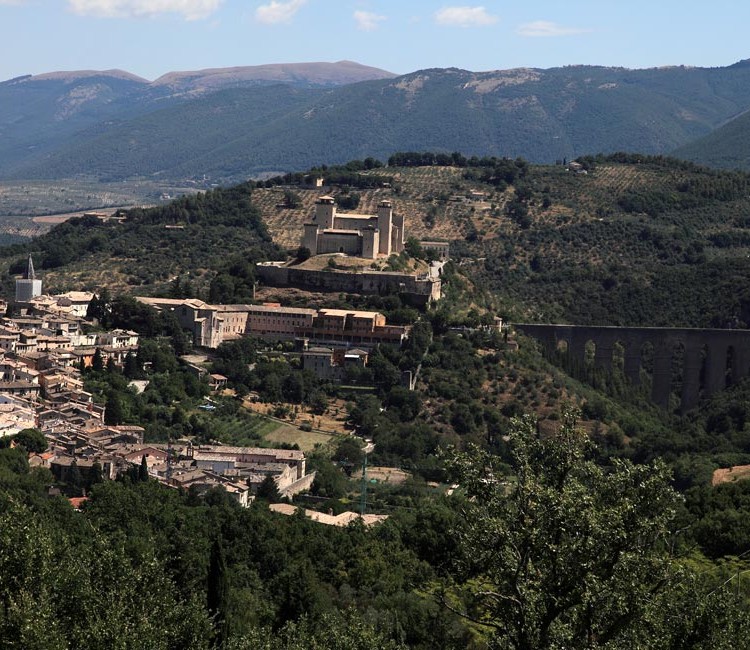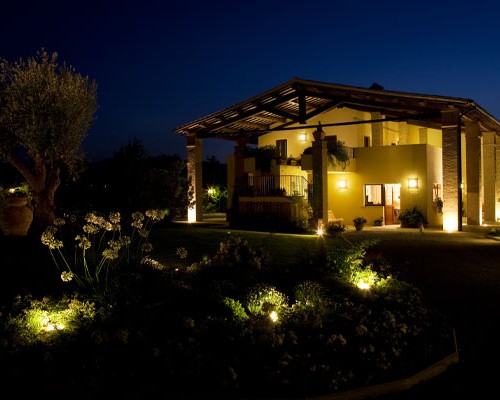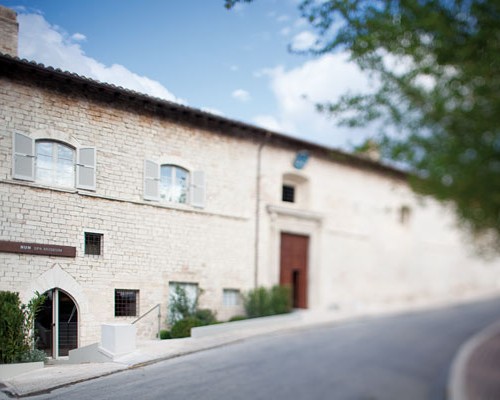By Admin
Posted in Assisi, Deruta, Gubbio, Perugia, Spoleto, Terni, Torgiano, TOURS | Tags : Assisi, Deruta, Norcia, Perugia, Spello, Spoleto, Terni, Torgiano
The following itinerary has been developed for those travelers looking for an all-inclusive vacation. You can book it as we suggest or ask for any modification that you wish. This is your special vacation, so only you can decide if it matches your dream vacation!
Upon your arrival at Fiumicino Airport, you will be welcomed by a personal driver and transferred to the reserved villa where you will find a welcome refreshment. The remainder of the day is yours to do with as you wish. Settle in to the luxurious accommodation that you’ll call “home” for the next few days! Your private chef will prepare dinner at the villa.
In the morning, following a sumptuous breakfast, you will be driven to Spoleto. The medieval fortress city of Spoleto is nestled on the slopes of Monte Subasio. Its Roman origins can be seen in the many temples, theaters and arches. Under the Lombard’s domination in 6th century AC, Spoleto became the main city of the Duchy of Spoleto. At the beginning of the 13th century, Spoleto was annexed to the Papal State, and from that period until the Unification of Italy in 1861, the city followed the historical sequence of the development of the Umbrian region and the Papal State. Although Spoleto is one of Umbria’s most iconic stops, it was almost unknown until Giancarlo Menotti selected Spoleto as the site for his summer arts festival, the Festival dei Due Mondi (Festival of Two Worlds), in 1958. Lunch will be enjoyed in one of the finest restaurants of Spoleto. Only a few kilometers separate Spoleto from the amazing Marmore Falls, which are definitely an essential stop in Umbria! Immersed in incomparable natural scenery, the waterfalls represent the hard work of human beings against the power of nature and date back to Roman times. In ancient times, the Velino River fed a wet, swampy, stagnant area, which was thought to result in illness. In 271 BC, the Roman consul Manius Curius Dentatus ordered the construction of a canal (the Curiano Trench) to divert the stagnant water into the natural cliff at Marmore. From there, the water fell into the Nera River below. However, that solution created a different problem. When the Velino River was flooding, its water flowed through the Nera towards the city of Terni, threatening its population. The flooding seemed to have no resolution until Renaissance times. It was in 1545 that Pope Paul III ordered a new canal to be built (the Pauline Trench). The plan was to expand the Curiano Trench and to build a regulating valve to control the flow. Work on this project was continued until the end of the 18th century when the abundance of water was used to feed the nascent steel factory in Terni.
Dinner will be served at the villa.
After breakfast, you will be driven to Torgiano, a centuries-old fortified village located at the top of one of the hills dominating the valley where the Chiascio River flows into the Tiber. With its ancient origins, Torgiano served as a defense post for one of the most important bridges over the Tiber. Its name is connected to the production of wine, a connection so strong that a bunch of grapes is actually depicted on the town’s coat of arms. Through the years, the village has maintained its medieval appearance along with a considerable portion of its city walls, including the legendary Baglioni Tower, also called “Torre di Giano” (Tower of Janus), from which the modern name comes from.
After a few days in Italy, you will have realized that food and drink are two essential components of the Italian culture and lifestyle. Visiting Torgiano, you cannot miss your chance to see the MUVIT, the Museo del Vino di Torgiano (Torgiano Wine Museum), which collects many interesting historical documents concerning the different wine sectors from wine-growing and wine-making techniques to artistic, folk, and bibliographical documentation. You shouldn’t miss your opportunity to take a guided introductory tour to discover our wine secrets from winemaking installations to the maturation of the wine in casks and barrels to bottle refinement. After completing the visit, there’s nothing better than a walk through the stunning vineyards, sipping on a lovely vintage! Lunch will be at local trattoria, a unique spot that is rich in atmosphere, good wine and exceptional local cuisine!
The afternoon will be spent in Spello, one of the true jewels of the region.
The Roman origins of this village can be seen in the beautiful stone gates and the ancient walls that surround this village. Take a leisurely walk and discover the hidden corners of Spello. A pleasant, low-incline walk will take you to the church of Santa Maria Maggiore. The church, built between the 11th and 12th centuries, has beautiful pieces of art inside, including Renaissance frescos of Pinturicchio and Perugino, the pavement featuring Deruta ceramics that were added in the 16th century and the Baglioni chapel. Dinner will be served at the villa.
Enjoy a leisurely breakfast and prepare for a special day! A private guide will join you for this memorable visit to Assisi, undoubtedly one of Umbria’s most famous towns. Assisi was founded by the Umbrian and reached its peak during Roman times. It is widely considered to be the cradle of Romanesque art and design. Narrow alleys and sprawling squares will make you feel immersed in the Middle Ages.
Assisi chiefly owes its fame to St. Francis, who was born and lived there. The presence of the “Poor man of Assisi” is celebrated in the Basilica of St. Francis. Don’t skip a visit to this church in which many of the most famous artists of the period left their trace, including Cimabue, Giotto, Simone Martini, and Lorenzetti to name a few. At lunchtime, stop in one of the excellent traditional restaurants in Assisi. They take great pride in delivering unforgettable meals in this legendary town.
Once you return to the villa, you will have time to relax before dinner. This evening, following the theme of the Middle Ages, you will enjoy a medieval menu prepared by your private chef along with medieval musical accompaniment.
After breakfast, you will be driven to Deruta where you can take part in a ceramics course.
An important school of ceramics is located in Deruta, which is one of Italy´s most renowned ceramic manufacturing areas. Deruta is a world-famous town that is known for the high quality of its ceramic production. Thanks to its professional masters, the school offers innovative and accredited techniques for the creation of ceramics, ranging from basic techniques to the most sophisticated expressions that define ceramics as a fine art. The method combines an entertaining experience with a superior quality of work. Enjoy creating and painting a plate or a cup that you can take home. The course lasts for about six hours and includes a visit to the Regional Museum of Ceramics. A delicious lunch awaits at the end of your ceramic experience.
In the afternoon, you will have plenty of time to stroll and visit some ceramic shops in Deruta where you can admire the incredible assortment of shapes and colors of Deruta’s beloved art form. The exquisite variety of colors often defines the town of origin for these collectible ceramic pieces. Not far from the small town, you can also find a precious religious site, the Church of Madonna dei Bagni. The walls of the 17th century structure are covered with multicolored majolica from the town of Deruta. Dinner will be served at the villa.
After spending an unforgettable week in Umbria, you will feel a bit more comfortable with this region and the Italian lifestyle as a whole. Essentially, this trip is a crash course in the “good life”. A visit to Perugia is a wonderful way to observe city life and have the chance to admire this modern destination that boasts a glorious past. Named “Augusta Perusia” by the Roman Emperor August, the town was founded by the Umbrians and was then inhabited by the Etruscans. During the Etruscan domination, Perugia became one of the twelve city-states of the Etruria and achieved great wealth and popularity. From those Etruscan times, the gates and the walls that surround the town still remain. In the 11th century, Perugia became a free commune, but it went into conflict several times with Gubbio and Assisi. Perugia was ruled by the Baglioni family and was opposed to the Papal State, which ruled over the majority of Umbria. To punish Perugia, Pope Paul III Farnese ordered a fortress built over the Baglioni’s headquarter (Rocca Paolina). At present, the fortress no longer exists, but it remains a well-preserved medieval area with palaces and streets that can be enjoyed by visitors. Perugia is also the birthplace of Pietro Vannucci, nicknamed ‘Il Perugino’, a famous Renaissance painter, whose works you can admire in the Collegio del Cambio (ancient Exchange Corporation) and inside the Galleria Nazionale dell’Umbria
(National Gallery of Umbria), both of which are located in the huge gothic Priori Palace. After your historical visit to the city, browse the permanent covered market where you will find fresh local food and can enjoy the cheerful hustle and bustle that is closely linked to the lively, everyday life of the town’s citizens! Somewhere along Corso Vannucci (the central avenue), you can have a light lunch or a cappuccino in one of the cozy old cafés of the town.
At the villa, everything will already be in place for the special evening ahead, including a delicious candle-lit dinner and a private concert!
On this morning you can take it easy! Enjoy a peaceful breakfast at the villa, take a rejuvenating run in the countryside, or enjoy a luxurious massage. You will be picked up around noon by your private chauffer and driven to Gubbio for lunch. Gubbio is located on the lowest slope of Mt. Ingino, a small mountain of the Apennines. The city’s origins are ancient. In fact, the town was already inhabited in the Bronze Age, but it became important over time for the Umbrian people who lived in this area until being conquered by the Romans. Ruins of a beautiful Roman amphitheater can still be admired just outside the walls. It was not until the Middle Ages that Gubbio adopted the structure and city plan, which remain to this day.
As a free commune, Gubbio increased its power and developed certain artistic and cultural traditions that still characterize the town. A tour through Gubbio absolutely must start from the magnificent Piazza Grande (end of the 15th century), which encompasses the public palaces and former seats of the two civilian magistracies: Palazzo dei Consoli, a majestic Gothic building completed around 1340 and home today to the Museum Civico, and Palazzo del Podestà, which holds the Town Hall. Palazzo dei Consoli (Consuls Palace) is now a museum, housing the Iguvine Tables (a series of seven bronze tablets discovered in 1444 that were likely written in the 3rd century BC in the native Umbrian alphabet and are considered one of the most important Italian documents). You should also visit the Basilica of Sant’Ubaldo, which is near the top of Mount Ingino and can be reached on a convenient aerial cableway. It preserves the intact body of the city’s patron saint and is where the ceri (candles) of Gubbio are kept. Every year on May 15th, on the eve of the feast of the city’s patron saint, St. Ubaldo, a strange race takes place. The statues of St. Ubaldo (patron of bricklayers), St. George (patron saint of haberdashers), and St. Anthony the Abbot (patron saint of donkey breeders and peasants) are placed on three tall, heavy wooden ceri or pedestals (meant to represent candles). The Ceraioli (pedestal bearers) carry the ceri on their shoulders and run down the city streets and then up to the basilica of St. Ubaldo on top of Mount Ingino. Dinner will be served at the villa.
Today will be a very relaxing day! Italy doesn’t have too many lakes, and Trasimeno Lake, even though at a first glance it may appear quite small, is the fourth largest in the country. It is also considered to be one of the most important wetland areas in Europe. Thanks to the purity of the water and the surrounding environment, the lake is a refuge for many species of birds, both as a place to rest during their migrations and a safe location to nest. Spending a day visiting the small villages on the shores of the lake or one of the three islands of the lake is a truly unique experience. Take a walk along the waterfront in Passignano and stop in one of the lovely outdoor cafés for an aperitif or a gelato before or after your visit to the town’s historical center. After a short ferry crossing, it is possible to reach Isola Maggiore. Its small hamlet, Isola, is the only residential area of the three islands that appear on the lake. Isola is an unspoiled paradise where only 16 people live today, but it has a rich historical tradition. The first to discover the importance and value of the serenity here was Saint Francis, who built a monastery here and created a hamlet with a brilliant future. The most active fishermen community of Trasimeno lived here, and while many of those participants are now retired, it’s still possible to find some of them willing to share anecdotes about the island. For lunch, try the flavorful local cuisine centered on freshly caught lake fish! On the return trip, stop in Castiglione del Lago. Enclosed in medieval walls, this lively location is known for shopping, and you can’t miss a visit to Palazzo della Corgna (Corgna Palace). From there, you can take the path leading directly to Rocca del Leone (Lion Fortress) and to its secret passages into the towers where you can enjoy a spectacular view over the whole Trasimeno. If you dream about doughy pizzas and crunchy sourdough bread, you need to sample some local specialties from a pizzeria with a wood-fired oven. Also, indulge in some great local beer without worrying about the drive back. After dinner, you will be driven back to your villa by your private driver!
Perhaps it’s time to think about packing, but you should definitely enjoy this last day in Umbria! Brunch will be served on the terrace, and in the afternoon you will be driven to Todi. The beautiful and elegant medieval town of Todi is located at the top of the hill overlooking the Tevere Valley. The town is enclosed by three rings of walls (Etruscan, Roman and medieval), which contain countless historical treasures. Begin your visit to Todi in the Piazza del Popolo, the heart of the city, overlooked by some of the most important buildings of this historic city center. Climbing the stairs of the Cathedral, you can take fantastic photos of the entire Piazza. You must also be sure to see the marvelous Consolazione Temple, a Renaissance church designed by Bramante. Before leaving Todi, have a delectable glass of the local white wine, the Grechetto of Todi, perhaps complemented by a slice of pan caciato (or nociato), a small round loaf with walnuts, cheese and raisins. For your last Umbrian evening, a bit of live music, a glass of sparkling wine for toasting, and a delicious dinner await at the villa to bid you “Arrivederci”!
You will be driven to the Fiumicino Airport for your flight. Have a safe trip home and relish the remarkable memories from Umbria to share with your loved ones!


